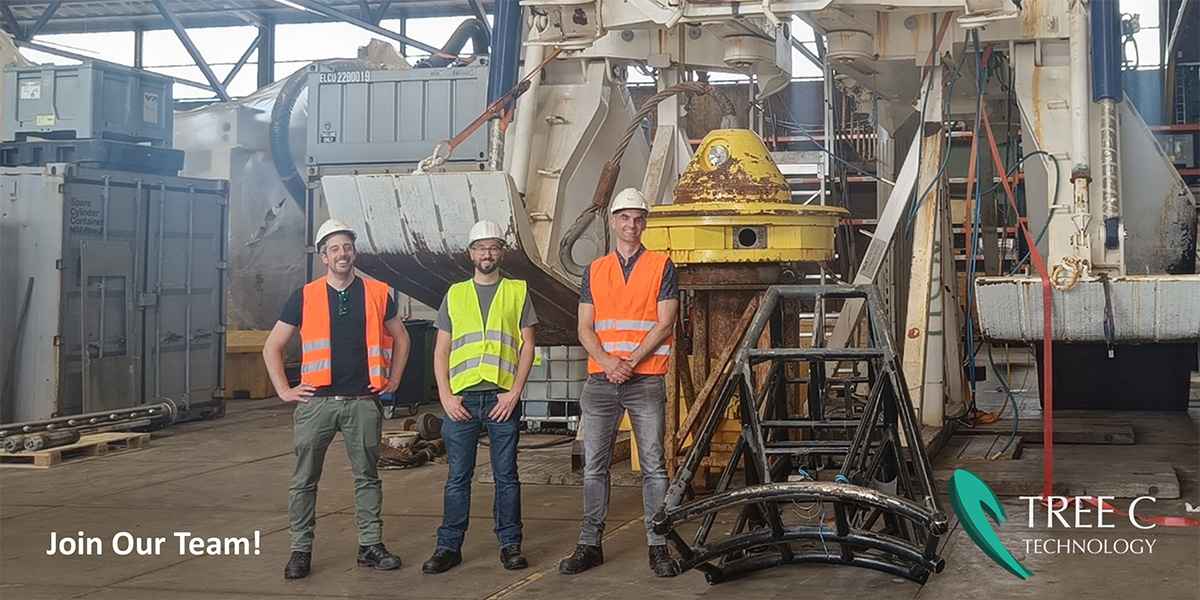Here’s What It’s Really Like To Work As A Simulation Engineer At Tree C

Simulator Project Manager, Willem Knijnenburg, has been with Tree C for over 13 years. When Willem first started, he was one of three simulator engineers working on their own small projects. Today it is all about cooperation, with a number of big projects in the pipeline, his team of simulator engineers is set to keep expanding. With expansion comes opportunity. One of the things Willem loves about his role is the chance to not only take on a diverse range of projects, but also to specialize in a particular area. As Project Manager, one of his duties is to allocate tasks to engineers – wherever possible, giving them work they enjoy – ensuring that the team effort leads to successful project deliveries. Here’s Willem’s insight on what it’s like to work as a simulator engineer at Tree C.
What kind of clients and projects do you work on?
Most of our clients are in the offshore industry using heavy equipment. It’s an interesting combination of big equipment and mind-boggling engineering! Our clients are high-tech.
As a simulation engineer, you may have different strengths – you might be good at graphics or programming – but rarely are you an expert in the client’s field. In this job, you always learn about new things – like remotely operated submarines or heavy lifting equipment, or pipe and cable laying technology.
Being a simulation engineer is great for people who love technology but don’t want to limit themselves to a specific field. Tree C tends to look for simulation engineers with a combination of skills – maybe mechanical engineers with digital proficiency or people with a background in computer programming with an interest in large-scale, heavy equipment.
If you get excited about big equipment and machinery, this is the place for you! Sometimes you might get a site visit – to a ship, for example – and it gives you a real-world perspective on the simulator you’re developing.
What’s a typical day in the life of a simulation engineer?
A typical day? That’s difficult! In simple terms. I guess it works like this: you start with a problem, and then detail it. You then build and implement digital twins of real-world equipment for deployment in a simulator.
Bringing real-world equipment and environments to life inside a simulator requires technical information from clients. This might be anything from a thousand-page manual to the project requirements. The challenge is always how to efficiently and accurately replicate real-world assets in a virtual environment. Decision-making is often around which details are most important to the client and which are not.
What are some of the challenges you face?
In offshore projects, a lot of environmental factors influence a ship – water current, wind, and waves. All those kinds of things can impact operations and need to be correctly accounted for inside the simulator.
Take heavy-lifting, for example. It’s important to be able to safely control a payload. Environmental factors can impact this and need to be faithfully recreated – using real-world physics – within the virtual environment.
Our simulators help companies in offshore operations to make big decisions around how to successfully carry out an operation. We need to get the details right to give our clients confidence in the accuracy and reliability of their simulations. Our simulators have an impact on real-world operations, making our job both challenging and rewarding.
Another challenge is balancing the fun side of developing digital assets with our clients’ commercial goals. In programming simulations, every client has specific requirements, for example when it comes to level-of-detail. This makes it difficult to accurately predict how long a project will take.
To overcome this challenge, we aim to get as much information as possible from clients about technical details and their objectives for the simulator, before putting together a clear roadmap and deliverables.
How does a simulation engineer get started at Tree C?
Engineers begin with a small project – a 3D model – which needs to be interactive. This includes physics rigging to make it behave like its real-world counterpart. Then there’s the scripting and programming part – so it can be controlled in the same way as in the real world. Our Simulator Framework provides a well-structured template for this, making it easier to cooperate with multiple developers.
We don’t throw new starters in the deep end by giving them an entire ship and saying ‘simulate it’. They start out small – with guidance – on simpler projects similar to ones we’ve previously done ourselves. They’re eased in!
What do you enjoy most about working for Tree C?
What I enjoy most is learning about different engineering topics whilst not being limited to a single area. Almost every project brings something new. That said, I have flexibility and opportunities to work on things that really interest me. That’s what makes it most fun for me. It’s also a small yet growing company with a friendly ambiance. It’s a happy place to work!
One fun thing we do is ‘Demo Thursday’ where we share information about projects we’ve been working on or anything interesting related to the work. For example, I recently visited a client’s ship. The visit lasted a week and I flew in and out via helicopter! It was really fascinating, so I took a lot of photos related to work processes – which we need to simulate. It is great to share this experience with the team, and it creates awareness of the daily practice and challenges of our clients.
Sometimes it’s difficult to see the end result of a simulation project. At Tree C, we share the end results of a project with everyone, showcasing and celebrating what we’ve achieved.
Interested in joining Tree C? View our current job openings